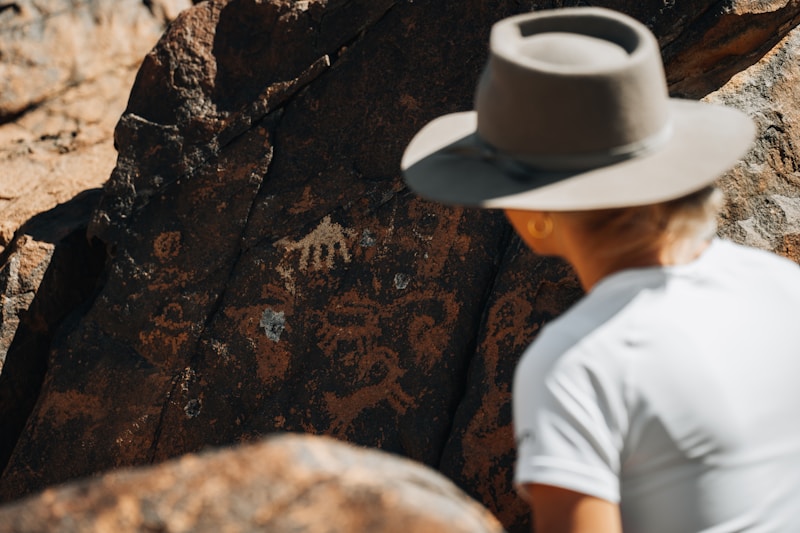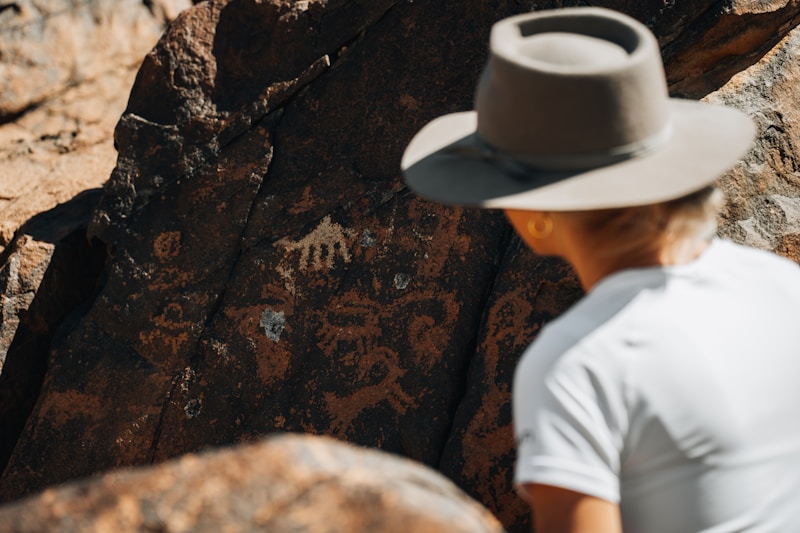9 Questions
What was the main purpose of the pyramids in ancient Egypt?
What was the role of the ancient Egyptian military?
What was the purpose of mummification in ancient Egypt?
What is the significance of the Rosetta Stone?
What was the purpose of the Book of the Dead in ancient Egypt?
What was the significance of the Nile River in ancient Egypt?
What was the role of priests in ancient Egypt?
What was the role of scribes in ancient Egypt?
What were some of the contributions of the ancient Egyptians to mathematics?
Summary
Northeastern African Civilization: Ancient Egypt
-
Ancient Egypt was a civilization in Northeast Africa situated in the Nile Valley, following prehistoric Egypt and coalesced around 3100 BC under Menes.
-
The history of ancient Egypt occurred as a series of stable kingdoms, separated by periods of relative instability known as Intermediate Periods: the Old Kingdom, the Middle Kingdom, and the New Kingdom.
-
During the New Kingdom, Egypt ruled much of Nubia and a sizable portion of the Levant, after which it entered a period of slow decline.
-
Ancient Egypt's success came partly from its ability to adapt to the conditions of the Nile River valley for agriculture, mineral exploitation, and trade.
-
The many achievements of ancient Egyptians include the quarrying, surveying, and construction of monumental pyramids, temples, and obelisks, a system of mathematics, a practical and effective system of medicine, irrigation systems, and agricultural production techniques, the first known planked boats, Egyptian faience and glass technology, new forms of literature, and the earliest known peace treaty made with the Hittites.
-
The Nile has been the lifeline of its region for much of human history, giving humans the opportunity to develop a settled agricultural economy and a more sophisticated, centralized society that became a cornerstone in the history of human civilization.
-
In Predynastic and Early Dynastic times, the Egyptian climate was much less arid than it is today, and large regions of Egypt were covered in treed savanna and traversed by herds of grazing ungulates.
-
By about 5500 BC, small tribes living in the Nile valley had developed into a series of cultures demonstrating firm control of agriculture and animal husbandry, and identifiable by their pottery and personal items.
-
The Old Kingdom was fueled by increased agricultural productivity and resulting population, made possible by a well-developed central administration, and saw major advances in architecture, art, and technology.
-
The First Intermediate Period (2181–2055 BC) followed the Old Kingdom's collapse and saw regional governors compete for territorial control and political power.
-
The Middle Kingdom (2134–1690 BC) restored the country's stability and prosperity, stimulating a resurgence of art, literature, and monumental building projects.
-
The Second Intermediate Period (1674–1549 BC) saw the Hyksos, a Western Asian people who had already settled in the Delta, seize control of Egypt until Ahmose I eradicated their presence in Egypt.
-
The New Kingdom pharaohs established a period of unprecedented prosperity by securing their borders and strengthening diplomatic ties with their neighbors.A Brief History of Ancient Egypt
-
Egypt's ancient civilization lasted for over 3,000 years, from around 3100 BC to 30 BC.
-
During the Old Kingdom, pharaohs were considered divine rulers who controlled the land's resources and relied on a bureaucracy of officials to manage their affairs.
-
The Middle Kingdom saw a period of stability, expansion, and artistic and cultural achievements, including the construction of the Karnak temple, the largest Egyptian temple ever built.
-
The New Kingdom pharaohs began a large-scale building campaign to promote the god Amun, whose growing cult was based in Karnak. They also constructed monuments to glorify their own achievements, both real and imagined.
-
Amenhotep IV ascended the throne and instituted a series of radical and chaotic reforms, changing his name to Akhenaten and promoting the previously obscure sun deity Aten as the supreme deity, suppressing the worship of most other deities, and moving the capital to the new city of Akhetaten.
-
Around 1279 BC, Ramesses II, also known as Ramesses the Great, ascended the throne, and went on to build more temples, erect more statues and obelisks, and sire more children than any other pharaoh in history.
-
Egypt eventually lost control of its remaining territories in southern Canaan, much of it falling to the Assyrians, and the effects of external threats were exacerbated by internal problems such as corruption, tomb robbery, and civil unrest.
-
Following the death of Ramesses XI in 1078 BC, Smendes assumed authority over the northern part of Egypt, ruling from the city of Tanis, while the south was effectively controlled by the High Priests of Amun at Thebes.
-
Around 727 BC the Kushite king Piye invaded northward, seizing control of Thebes and eventually the Delta, which established the 25th Dynasty, during which Pharaoh Taharqa created an empire nearly as large as the New Kingdom's.
-
Egypt became a province of the Roman Empire in 30 BC, following the defeat of Mark Antony and Ptolemaic Queen Cleopatra VII by Octavian (later Emperor Augustus) in the Battle of Actium.
-
The pharaoh was the absolute monarch of the country and, at least in theory, wielded complete control of the land and its resources, while the temples formed the backbone of the economy.
-
Egyptian society was highly stratified, and social status was expressly displayed, with the upper class prominently displaying their social status in art and literature.
-
The ancient Egyptians viewed men and women, including people from all social classes, as essentially equal under the law, and even the lowliest peasant was entitled to petition the vizier and his court for redress.Ancient Egypt: Legal System, Agriculture, Animals, Natural Resources, Trade, Language, and Literature
Legal system:
- Pharaoh was head of the legal system, responsible for enacting laws and delivering justice
- Egyptian law based on common-sense view of right and wrong that emphasized resolving conflicts
- Local councils of elders, known as Kenbet, ruled in court cases involving small claims and minor disputes
- Serious cases involving murder, major land transactions, and tomb robbery were referred to the Great Kenbet
- Plaintiffs and defendants were expected to represent themselves and swear an oath that they told the truth
- Punishment for minor crimes involved fines, beatings, facial mutilation, or exile
- Serious crimes such as murder and tomb robbery were punished by execution
- Oracles played a major role in the legal system, dispensing justice in both civil and criminal cases
Agriculture:
- Rich fertile soil resulting from annual inundations of the Nile River allowed for an abundance of food production
- Three seasons recognized: Akhet (flooding), Peret (planting), and Shemu (harvesting)
- Farmers plowed and planted seeds in the fields, which were irrigated with ditches and canals
- Crops included emmer and barley, used to make bread and beer, as well as flax, grapes, and vegetables
- Sickles used to harvest crops, which were then threshed with a flail and winnowed to separate the grain from the chaff
Animals:
- Cattle were the most important livestock, with sheep, goats, and pigs also kept
- Poultry, such as ducks, geese, and pigeons, were captured in nets and bred on farms
- Bees were domesticated and provided honey and wax
- Donkeys and oxen were used as beasts of burden, and horses were introduced by the Hyksos
- Cats, dogs, and monkeys were common pets, while more exotic pets were reserved for royalty
- Animals were also kept in large numbers for the purpose of ritual sacrifice
Natural resources:
- Egypt is rich in building and decorative stone, copper and lead ores, gold, and semiprecious stones
- Natural resources allowed for the building of monuments, sculpting statues, making tools, and fashioning jewelry
- Embalmers used salts from the Wadi Natrun for mummification
- Ore-bearing rock formations were found in distant, inhospitable wadis in the Eastern Desert and the Sinai
- High-quality building stones were abundant in Egypt, such as limestone, granite, basalt, and sandstone
Trade:
- Ancient Egyptians engaged in trade with foreign neighbors to obtain rare, exotic goods not found in Egypt
- Trade partners included Nubia, Palestine, Byblos, Punt, Anatolia, Greece, and Crete
- Goods traded included gold, incense, timber, tin, olive oil, and lapis lazuli
Language:
- Egyptian language is a northern Afro-Asiatic language closely related to Berber and Semitic languages
- Written from c. 3200 BC to the Middle Ages and remaining as a spoken language for longer
- Ancient Egyptian had phases of Old, Middle, Late, Demotic, and Coptic
- Coptic is still used in the liturgy of the Egyptian Orthodox Church and is found in modern Egyptian Arabic
Literature:
-
WritingAncient Egypt: A Detailed Overview
-
Ancient Egypt is a civilization that existed in northeastern Africa from around 3100 BC until it was conquered by the Roman empire in 30 BC.
-
The civilization was divided into two regions: Upper Egypt and Lower Egypt, which were unified under the first pharaoh, Narmer, in 3100 BC.
-
The pharaohs were considered divine rulers and their rule was based on the divine right of kings.
-
Ancient Egypt had a complex polytheistic religion with a large pantheon of gods and goddesses who were often depicted in art and architecture.
-
The ancient Egyptians placed a great value on hygiene and appearance, and bathed in the Nile and used a pasty soap made from animal fat and chalk.
-
Music and dance were popular entertainments for those who could afford them, and early instruments included flutes and harps.
-
Ancient Egyptian cuisine consisted of bread and beer as staples, supplemented with vegetables such as onions and garlic, and fruit such as dates and figs.
-
The architecture of ancient Egypt includes some of the most famous structures in the world, including the Great Pyramids of Giza and the temples at Thebes.
-
Ancient Egyptian art was highly stylized and symbolic, serving political and religious purposes with precision and clarity.
-
The ancient Egyptians maintained an elaborate set of burial customs that they believed were necessary to ensure immortality after death, including mummification and burial with goods for the afterlife.
-
The ancient Egyptian military was responsible for defending Egypt against foreign invasion and for maintaining Egypt's domination in the ancient Near East.
-
The ancient Egyptians were skilled in mathematics, astronomy, and medicine, and made important contributions to these fields.
Description
Do you know your ancient Egyptian history? Test your knowledge with our quiz on Northeastern African Civilization: Ancient Egypt. From the Old Kingdom to the New Kingdom, explore the rise and fall of this fascinating civilization, including their legal system, agriculture, animals, natural resources, trade, language, and literature. Discover the secrets of the pyramids, the gods and goddesses, and the daily life of ancient Egyptians. Take the quiz now to see how much you really know about this ancient civilization.



